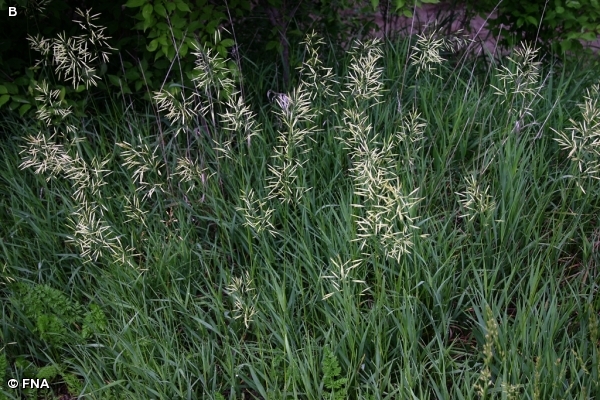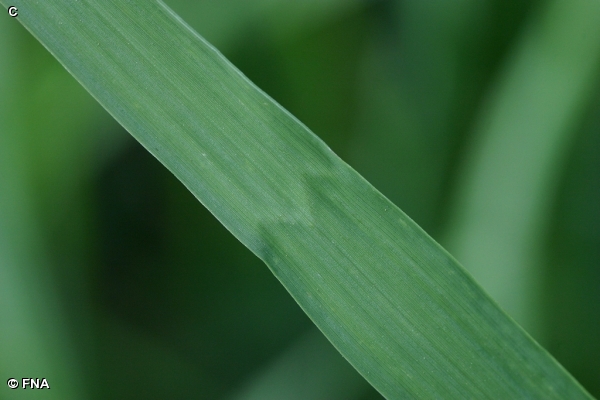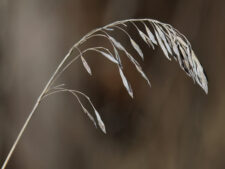
Strongly rhizomatous, sod forming, invasive perennial with flowering stems from 1 1/2 – 3 1/2 feet tall. The stem, leaves and leaf sheaths are smooth and hairless (D). Although present in other bromes, the M-shaped constriction of the leaf (C), is especially prominent in smooth brome and a good field mark. The moderately open symmetrical 5-8 inch panicles have ascending branches bearing large, straw-colored spikelets from 3/4 – 1 1/4 inch long, each containing several florets (A). Florets have large yellow stamens and white stigmas (E).
Fields, pastures, roadsides, and ditches. Smooth Brome is locally common on Ridge and North Stream Trails in Fontenelle Forest. At Neale Woods it occurs in prairie restorations, along roadsides and disturbed areas.
Our other brome species, Ear-leaf (Bromus latiglumis), Canada (Bromus pubescens) and Japanese Brome (Bromus japonicus) have nodding panicles and hairy leaf sheaths. The first two are found in shadier sites.
This cool season grass was introduced from Eurasia in the 1880s and is still widely cultivated for cover, pasture and hay. It has escaped into a variety of habitats throughout much of the U.S. and Canada. A considerable amount of Smooth Brome was planted at Neale Woods in the period prior to its acquisition by Fontenelle Forest. Smooth Brome plots are now target sites for prairie restoration projects.
The content of NatureSearch is provided by dedicated volunteer Naturalists of Fontenelle Forest who strive to provide the most accurate information available. Contributors of the images retain their copyrights. The point of contact for this page is: Neal Ratzlaff.





